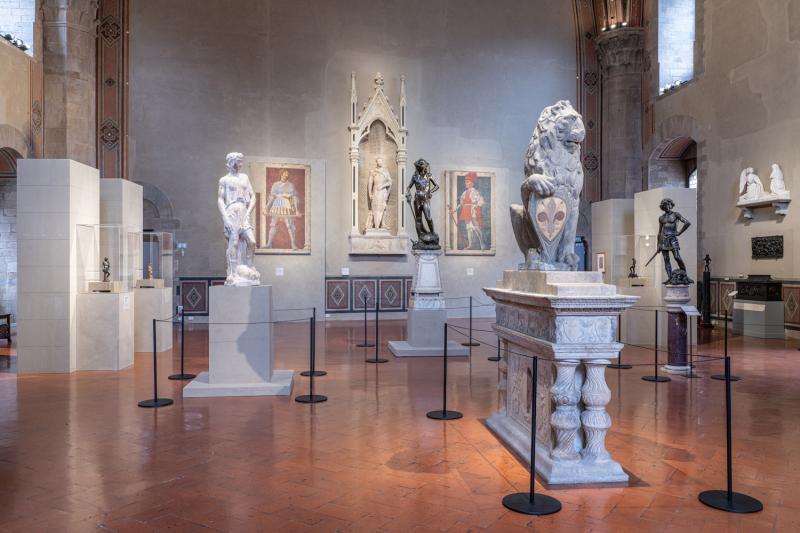The most complete exhibition ever dedicated to Donatello, the groundbreaking Renaissance sculptor who changed the history of Western art, opened in Florence on March 19.
“Donatello, il Rinascimento” (Donatello, the Renaissance) features 130 works including sculptures, paintings and drawings, with loans from some of the most important museums in the world, to retrace the life and artistry of Donatello, described as the “master of the masters.”
The exhibition is on view at two Florence locations: Palazzo Strozzi and the Bargello National Museum. It is divided into 14 chronological-themed sections where Donatello’s works are placed in comparison with those of his contemporaries and of later artists, including Brunelleschi, Masaccio, Mantegna, Giovanni Bellini, Michelangelo and Raphael.
The first comparison is between two famous wooden crucifixes: the one Donatello sculpted for the Basilica of Santa Croce when he was just 20 years old, and the one his good friend Brunelleschi made for the Basilica of Santa Maria Novella (according to an anecdote recounted by Giorgio Vasari in his Vite, when Donatello asked Brunelleschi to give an opinion on what the young artist thought was a great sculptural work, Brunelleschi responded by saying that the Christ sculpted by Donatello looked like a farmer, “not a body similar to Jesus Christ, who was most delicate, and in all parts the most perfect man who was ever born”).
The exhibit travels through the places where Donatello worked - besides Florence, Siena, Prato Padua and Rome - met other artists, and experimented with the most diverse materials and techniques to produce innovative sculptures. The show concludes with a special section dedicated to the influence that Donatello had on the artists who came after him, including Raphael, Michelangelo and Bronzino, thus testifying the seminal importance of his work on Italian art.
Donato di Niccolò di Betto Bardi, better known as Donatello, was born in Florence circa 1386. He studied classical sculpture and was a favorite of the Medici family. He spent time in other cities, where he worked on commissions and taught others, thus introducing his techniques to other parts of Italy. Donatello's famous David, financed by Cosimo de’ Medici, was the first freestanding nude male sculpture since antiquity.
Donatello was a decidedly counter-current, modern and transgressive spirit, looking for a new vision of the world. He was the first to imprint (pin down) the psychology of the subjects he portrayed on the marble.
Donatello, along with Brunelleschi and Masaccio, gave way to the extraordinary season of the Renaissance.
To add to what is already considered one of Italy’s most important art exhibitions of 2022 is the caliber of the loans, some of which have never been granted before; they come from almost 60 different museums, churches and cultural institutions, including the National Gallery of Art in Washington, the Metropolitan Museum of Art in New York, the Musée du Louvre in Paris, the Staatliche Museen of Berlin, the Kunsthistorisches Museum of Vienna, the Uffizi Galleries, the Basilica of Sant'Antonio in Padua and the Florentine basilicas of San Lorenzo, Santa Croce and Santa Maria Novella.
“Donatello, il Rinascimento” is open until July 31. For more information, visit the Palazzo Strozzi website.









